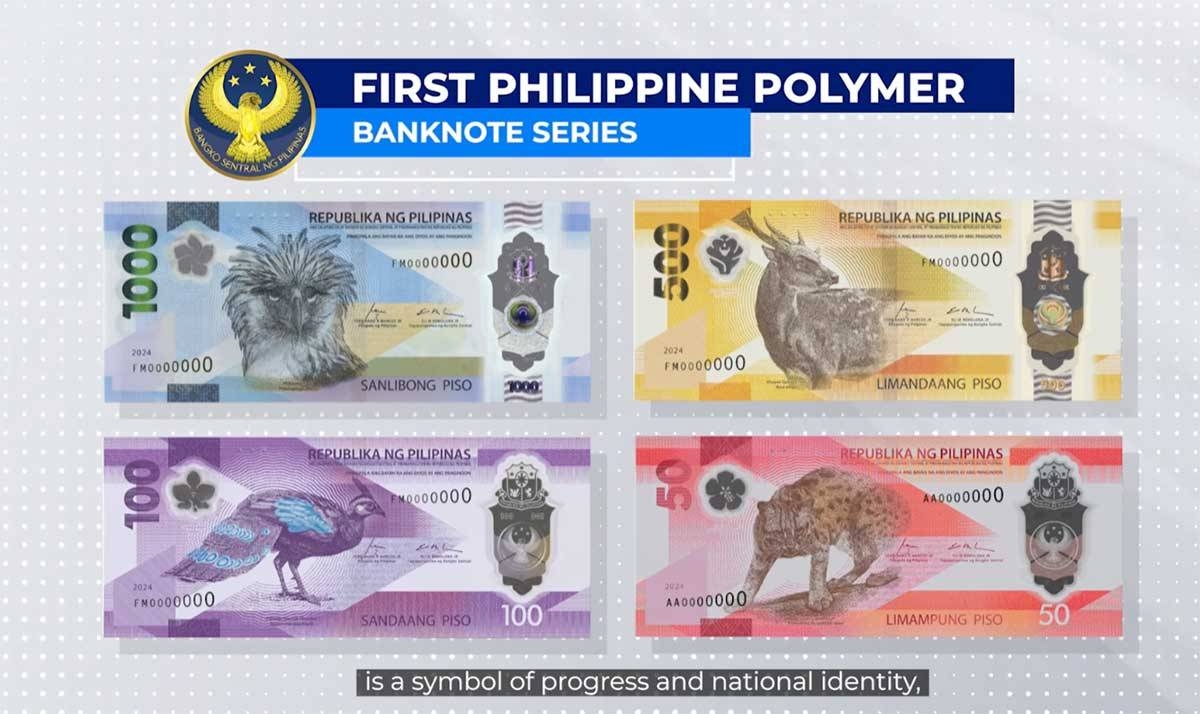MANILA, Philippines — President Ferdinand Marcos Jr. on Thursday led the historic unveiling of the first Philippine polymer banknote series featuring enhanced security and durability, which will be available in circulation starting the first quarter of 2025.
In his speech during a ceremony in Malacañang, the President described the introduction of the polymer banknotes as “a groundbreaking step that embodies the strength, ingenuity, and forward momentum of our nation.”
“The first Philippine polymer banknote series, which includes the 1000, 500, 100, and 50-peso denominations, marks a historic moment for our country. It builds on the success of the one-thousand-peso polymer note introduced in April of 2022 and aligns with the global best practice of updating currency features every 10 years,” Marcos said.
“The introduction of the first Philippine polymer banknote series reflects the progress we are making as a Bagong Pilipinas—practical, innovative, and deeply meaningful,” he added.
The President said the Philippines was joining over 40 countries, including Australia, Canada, the United Kingdom, and Singapore, to have adopted polymer banknotes due to their proven benefits, ensuring that the country’s currency remained secure, durable, and sustainable.
“Polymer banknotes are designed to keep up with the demands of everyday life. Unlike paper bills, which wear out after about a year, a year and a half, polymer banknotes can last up to seven and a half years—five times longer,” Marcos said.
“And that means we no longer need to replace them as often, saving money, cutting down on waste, and making a meaningful contribution to protecting the environment,” he added.
Marcos also enumerated other benefits of using polymer banknotes in connection with health and hygiene, citing a study of the Department of Health finding polymer banknotes are cleaner than paper bills.
He said that another key advantage was security, noting the adoption of polymers would mitigate currency counterfeiting, which has always been a problem for economies around the world.
“Their advanced security features make it more difficult to replicate. Notably, countries like Malaysia and Vietnam have seen significant drops in counterfeiting after switching to such polymer notes,” Marcos said.
“By upgrading our currency, we are making sure that every hard-earned peso stays safe, whether it is saved, whether it is spent, or whether it is invested,” he added.
The President also reminded the public that paper banknotes would continue to circulate and remain valid.
He said there was no need to worry about the cash in their wallet, noting the use of polymer banknotes was simply a step forward.
“So, there is no need to worry about that, the cash in your wallet is — still has its value. The polymer banknotes are simply a step forward—stronger, more durable, better suited for today’s demands, while still preserving the essence of what makes our currency truly Filipino,” Marcos said.
The P1,000 polymer banknote carrying the image of the Philippine eagle, stands for the strength, freedom, and sharp vision of Filipinos, the President said

